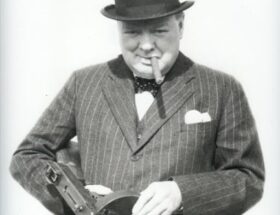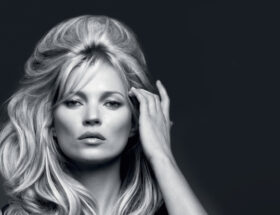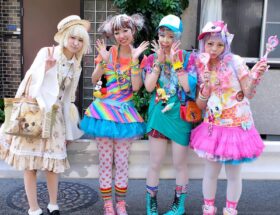In 2024, the fashion world witnessed a seismic shift in consumer preferences, with “quiet luxury” emerging as one of the most talked-about trends across the web. Unlike the flashy logos and ostentatious displays of wealth that dominated previous decades, quiet luxury emphasizes understated elegance, high-quality materials, and timeless designs. This article delves into why quiet luxury became a cornerstone of 2024 fashion articles, exploring its roots, its impact on the industry, and how it resonated with consumers globally.
The Origins of Quiet Luxury
Quiet luxury isn’t a new concept, but its resurgence in 2024 captivated fashion enthusiasts and writers alike. The trend traces its modern roots to the late 2022 shift away from maximalism, as consumers began seeking pieces that whispered sophistication rather than shouted extravagance. According to a 2024 report by The Business of Fashion, the quiet luxury movement gained momentum as a response to economic uncertainty and a growing desire for sustainability.
Brands like The Row, Loro Piana, and Bottega Veneta became poster children for this aesthetic, offering minimalist designs crafted from luxurious fabrics like cashmere, silk, and fine wool. Fashion articles in 2024 frequently cited these brands as pioneers, noting how their focus on craftsmanship over branding aligned with a cultural shift toward authenticity.
A Rejection of Fast Fashion
One reason quiet luxury dominated 2024 fashion discourse was its stark contrast to the fast fashion model. As consumers grew weary of disposable clothing, articles highlighted how this trend encouraged investment in durable, versatile pieces. A study by McKinsey & Company in 2024 found that 62% of luxury consumers prioritized quality and longevity over trendiness, a statistic that fueled countless think pieces on the web.
Why Quiet Luxury Resonated in 2024
The appeal of quiet luxury in 2024 wasn’t just about aesthetics—it was deeply tied to societal shifts. Fashion writers explored how this trend reflected a broader move toward mindfulness, both in consumption habits and personal style. Here’s why it struck a chord:
- Economic Context: With inflation and economic instability lingering from previous years, consumers leaned toward pieces that offered long-term value.
- Cultural Fatigue: The exhaustion from social media’s relentless trend cycle pushed people toward simplicity and subtlety.
- Sustainability: As climate concerns grew, articles praised quiet luxury’s alignment with eco-conscious values, emphasizing fewer, better purchases.
A case study from British Vogue spotlighted how celebrities like Sofia Richie and Kendall Jenner embraced this trend, wearing The Row’s Margaux bag and Loro Piana’s cashmere coats. Their influence amplified the conversation, making quiet luxury a staple in 2024 fashion articles.
The Role of Media and Influencers
Social media platforms like Instagram and TikTok played a pivotal role in popularizing quiet luxury. Hashtags like #QuietLuxury racked up over 1.2 million posts by mid-2024, according to analytics from Sprout Social. Influencers shifted from promoting loud logos to showcasing neutral-toned, high-quality staples, inspiring countless articles about the “old money” aesthetic.
Key Pieces Defining the Trend
Fashion articles in 2024 didn’t just discuss the philosophy of quiet luxury—they also dissected its wardrobe essentials. Writers consistently highlighted a handful of items that epitomized the trend, offering readers tangible ways to adopt it:
- Tailored Outerwear: Oversized wool coats from Max Mara and trench coats from Burberry became must-haves for their timeless appeal.
- Neutral Knitwear: Cashmere sweaters in shades like camel, cream, and gray dominated editorials, with brands like Everlane and Khaite leading the charge.
- Minimalist Accessories: The Row’s Margaux bag, priced at $3,500+, sold out repeatedly, becoming a symbol of discreet wealth.
A feature by Who What Wear noted that these pieces weren’t just fashionable—they were investments, with resale values often exceeding original prices on platforms like Vestiaire Collective.
Case Study: The Row’s Billion-Dollar Valuation
The Row, founded by Mary-Kate and Ashley Olsen, became a lightning rod for 2024 fashion articles after achieving a $1 billion valuation, as reported by Forbes. The brand’s focus on quiet luxury—think impeccably cut trousers and buttery leather totes—earned it cult status. Articles dissected how its “if you know, you know” ethos resonated with a clientele tired of overt branding.
The Global Impact on Fashion Brands
Quiet luxury didn’t just influence consumers—it reshaped the strategies of fashion houses worldwide. In 2024, even traditionally logo-heavy brands like Gucci and Louis Vuitton introduced capsule collections with subtler designs. A report from McKinsey & Company revealed that luxury brands adopting this aesthetic saw a 15% uptick in sales to Gen Z and millennial buyers, who valued authenticity over flashiness.
Smaller labels also capitalized on the trend. Copenhagen-based Saks Potts gained traction with its minimalist leather jackets, while Paris-based Sézane saw a 20% increase in U.S. sales thanks to its quiet luxury-inspired dresses. Articles praised these brands for making the trend accessible without sacrificing quality.
Challenges and Criticisms
Despite its popularity, quiet luxury wasn’t without detractors. Some 2024 articles criticized it as elitist, arguing that its high price points excluded most consumers. Others noted the irony of a “sustainable” trend still rooted in luxury consumption. These debates added depth to the discourse, making it a multifaceted topic across the web.
How Quiet Luxury Shaped 2024 Fashion Writing
The sheer volume of articles about quiet luxury in 2024 underscored its dominance. From analytical pieces on its economic implications to styling guides for everyday wear, writers approached it from every angle. A search on Google Trends showed a 300% spike in searches for “quiet luxury fashion” between January and June 2024, reflecting its grip on public imagination.
Publications like Vogue and Elle ran recurring features on the trend, while independent blogs offered DIY takes, suggesting thrifted alternatives to high-end pieces. This diversity ensured that quiet luxury remained a hot topic, appealing to both luxury shoppers and budget-conscious readers.
Statistics Driving the Narrative
Data bolstered the trend’s prominence in 2024 articles:
- 65% of luxury buyers preferred logo-free designs, per Lyst’s Q3 2024 report.
- Quiet luxury-related content saw a 40% higher engagement rate on Instagram, according to HypeAuditor.
- Sales of minimalist outerwear rose 18% year-over-year, per Edited’s retail analysis.
Conclusion: The Lasting Legacy of Quiet Luxury
Quiet luxury’s reign as a top fashion topic in 2024 wasn’t just a fleeting moment—it was a cultural reset. By prioritizing quality, subtlety, and sustainability, it challenged the industry to rethink excess and embrace enduring style. Fashion articles chronicled its rise with fervor, offering readers a lens into a world where less was indeed more.
As we look toward 2025, the influence of quiet luxury lingers, promising to shape future trends and consumer habits. Whether you’re investing in a cashmere sweater or simply admiring the aesthetic from afar, its impact is undeniable—a testament to the power of understated elegance in a noisy world.









